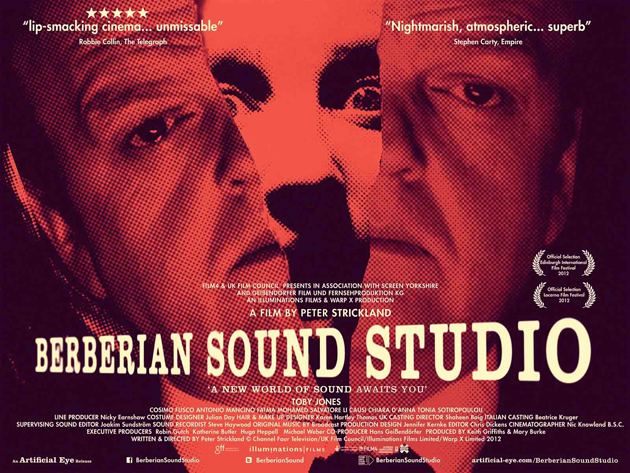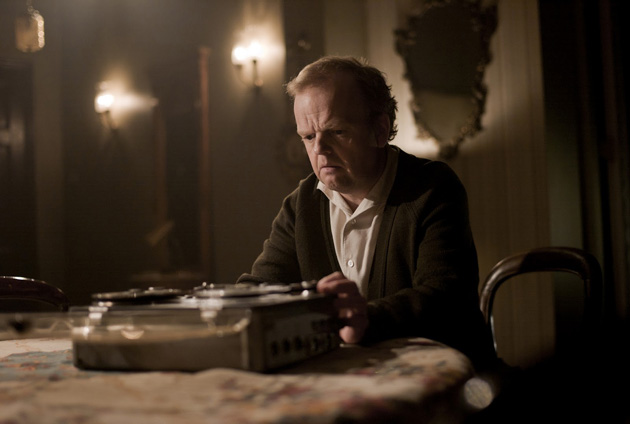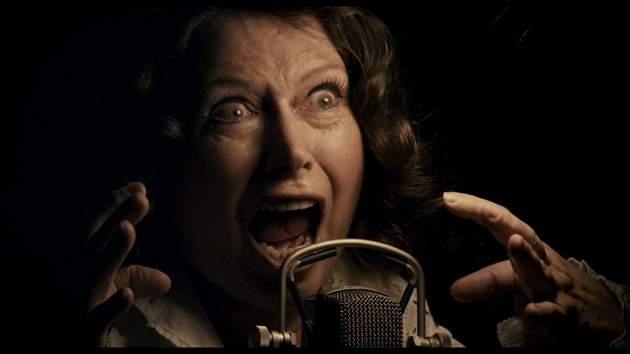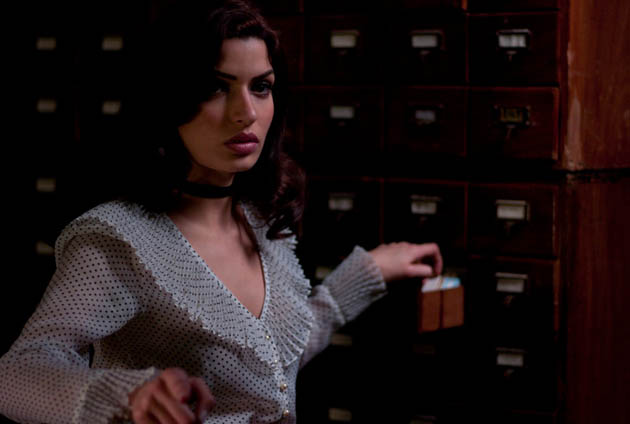Berberian Sound Studio, Peter Strickland’s second feature film, is a behind-the-scenes tale of a middle-aged sheepish English sound engineer named Gilderoy (also the name of an awkwardly flamboyant character in the Harry Potter universe) invited to the Continent to work on an Italian giallo exploitation/slasher horror flick. The production delights in the gruesome torture of witches in every conceivable manner (red hot poker vagina insertion is one of many) for which our reluctant protagonist has the responsibility of producing the appropriate sound effects.


Strickland’s clever twist is that he never actually shows us any of these scenes, we only hear them. Watermelons are hacked open, cabbages are stabbed and sprouts are torn out of radishes. As our imagination is stimulated to conjure these horrific scenes we are reminded of the integral and often underappreciated role of sound in cinema but also in everyday life.
However, sound is only but one of many of Berberian Sound Studio’s accomplishments. The characters, story, dialogue and atmosphere, are all meticulously woven together with great care, sensitivity and sophistication. We sympathize with Gilderoy’s homesickness as he reads his dear mother’s letters, reporting on the chiffchaffs nesting near their home. We struggle with him to summon the courage to demand reimbursement for his flight ticket, a curious subplot that builds up tension towards the film’s erratic climax. And it’s difficult to forget Gilderoy’s studio partner, the uncompromisingly macho chiseled Francesco, or the mesmerizingly beautiful bitchy Greek secretary, Elena. Though awkward, his power play with these characters is surprisingly watchable and even peculiarly sexy (in a master/slave sort of way), capturing a psychological tension that’s as complex as it is subtle. The culture clash motif (a stereotypically ‘civilized’ quiet uptight English man pitted against the loud expressive ‘barbaric’ Southern Europeans) is here merely an excuse for rich character exploration.

“These things happen, this is history, and a film director must be true,” says Santini, the production’s suave director, in one scene where he justifies the violence in his film. Strickland does the same, only he does it by capturing the far more interesting subtle power dynamics and ‘horrific’ tensions of the working environment, and he does so with sonic precision.



